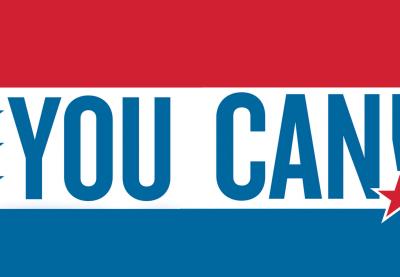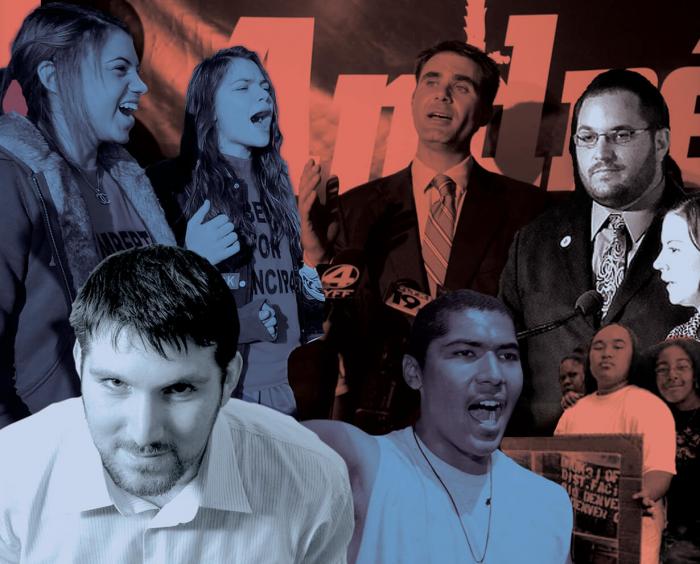A young person's energy and creativity can be unleashed on the world of politics by a high school government or current events class. In the case of Ray Zaccaro, all it took was a teacher's question.
It was 1995, the spring of his senior year at North Babylon High School on New York's Long Island. Zaccaro was 17, riding high with plans to attend George Washington University in the fall, when he found himself at the head of a movement that would energize and empower his graduating class, his teachers and his neighbors.
It started in a student lounge when word spread that the school district was ready to implement an austerity budget the following year, which meant many electives and extra-curricular activities would be cut and fees would be instituted for sports programs.
"When I heard they were cutting the sports budget, I knew that would hurt the poorest kids the most," Zaccaro recalled recently over coffee in Washington, D.C., where he works as a press secretary for a member of Congress from New York. "They were talking about charging $250 to play football. I knew that was more than my family could afford, and we were far from the poorest family in the district."
In that student lounge, lamenting what a disaster an austerity budget would be for educational standards and the quality of student life, Zaccaro said, "I wish a student could be on the school board."
That's when a teacher who had been listening to the conversation asked, "Why don't you run?"
"Why not?" Zaccaro asked himself. "Basically, he empowered me by saying little more than, 'You can.' That was enough to get me to do it on my own."
Zaccaro collected his belongings and walked to the district headquarters to find out what he had to do to run for the school board.
"I remember it was raining and I was soaking wet," he said. "My hair was down past my shoulders, so I pulled it back. I had on a long denim shirt with a Jimi Hendrix T-shirt underneath, and a pair of jeans."
The receptionist told him that school board candidates needed petitions signed by about 100 registered voters in the district. And from the way people in the district office looked at Zaccaro, he said, "I know they thought I was picking these up for someone else."
The next day he began knocking on doors in his working-class to middle-class neighborhood of single-family homes on tree-lined streets. Zaccaro collected more than twice the number of signatures necessary.
"I think people were just really excited to see a young person with a lot of energy who was trying to make our community better," he said.
Zaccaro was certified as a candidate for the ballot even though he wouldn't turn 18 and be eligible to vote until April 10, two months before Election Day.
He enlisted a friend to design campaign fliers, which he and his campaign supporters handed out at grocery stores in the district. To ensure that Zaccaro received every possible vote from members of his graduating class, the campaign team also set out to register everyone in the class of 1995 who would be 18 by Election Day.
When the polls opened, Zaccaro was feeling good about his prospects and satisfied that he and his volunteers had done all they could. But frustration set in when poll workers said his name was not among the list of eligible voters.
"I couldn't believe it," he says today, aggravation still present in his voice. "My name was on the ballot, but I couldn't vote?"
Due to a clerical mistake by election officials, almost all of the members of the 330-person graduating class who should have been able to vote were unable to because their names weren't on the voter rolls.
Zaccaro lost by 96 votes.
He says the experience — even with the election irregularities — didn't leave him jaded.
"I had the opposite reaction. The voter turnout was the highest in district history, even with so many people not being able to vote," he said. "It wasn't just kids who were energized; it was their parents, too."
Teachers, Zaccaro said, can do two important things to help students realize their political energy: "Never underestimate their students, and don't inhibit their creativity because at that age there is just a natural proclivity to think outside the box and sometimes that can make all the difference."
In radio and media interviews, Amina Steck — who with a Bronx high school classmate made a 17-minute video about the rights of West African immigrant girls — added another powerful aspect of teacher inspiration.
"A few times, I felt like giving up, but having (teacher) Liana (Maris) and other teachers behind us was great," she told Providence, R.I.-based What Kids Can Do. "It helped me see how much I can do if I put my mind to it."
Wired for Change
Technology and the Internet have created an environment that allows young people to make a difference on a huge scale. Consider the high school student's Facebook page, which grew to more than 1 million "friends" supporting presidential candidate Barack Obama. Or the Girls for a Change website that helps empower middle and high school girls to create social change in their communities. Or any number of young people who create politically oriented videos that garner thousands of viewings on YouTube.
"The good news is that it is more possible than ever before for someone with a big idea to gather people around it and make a big impact in the world," said Eli Pariser, executive director of MoveOn.org, one of the largest political action committees in the country.
Pariser said it never occurred to him that the website he created for $20 on his personal computer to call for a multilateral response to the 9/11 terror attacks would flourish into the level of activism he is engaged in today. He was a college student when he launched that online petition, and today is atop an organization with roughly 3.2 million members.
"What's exciting about it is when you hit the right thought at the right time and it resonates and you stay in touch, it can start to build into something very powerful very quickly," he said. The next step is shifting from online to "real world" organizing.
"It's not as big of a gap as people think," Pariser said. "If you have a lot of people in touch by email, it doesn’t take much to say, 'Hey, let's get together and make phone calls and have a rally.' People do show up."
South Carolina Lt. Gov. André Bauer (R) has turned to the social networking site MySpace.com to connect with younger voters in the Palmetto State. The idea came to him from a student who was working on one of his campaigns. Bauer's "friends" list quickly grew to almost 1,000, and he uses that network to recruit volunteers for rallies and other events across the state.
"It is an easy and free way to get my message out," said Bauer, who also uses the website to dispense bumper stickers and campaign placards. In order to engage young people in the political process, Bauer says, it is important "to go where young people are and to talk about the things they are interested in."
At 39, Bauer is the nation's youngest elected lieutenant governor, a position he has held since being inaugurated in 2003. Prior to that he served in the South Carolina state legislature, both House and Senate, first being elected when he was 26-years-old.
The South Carolina legislature has a cadre of young lawmakers. The youngest is a 22-year-old who graduated from college in 2005.
"Younger people bring vastly different life experiences to government," Bauer says. "When I was in school we had computers only in the library. Now there are computers in every classroom, plus almost everyone has a computer at home. These younger people see how technology has changed everything, and that shapes their experiences."
Unexpected Leaders
Gabriel Pendas is the first to admit that his path to political activism was anything but traditional. Although he grew up in a Cuban household in Miami where "getting in the car and heading out to a rally" protesting the Castro regime was commonplace, Pendas earned his GED after being kicked out of two high schools and going to reform school.
He didn't have any specific views about politics, he says. "I just knew what I didn't like," which was poverty and social inequity.
After securing admission to Florida State University through an Upward Bound program, Pendas quickly became involved with the campus coalition United Students Against Sweatshops.
With concerns about gaining entry to college or graduate school, paying for tuition, finding a summer job or the myriad other issues consuming young people's lives, empowering and energizing students for political and social action is no easy task, Pendas learned.
However, "there is also a growing sense among people that we need to be engaged politically and civically," said Pendas, who now serves as president of the United States Students Association, a national coalition of college students who advocate and organize around higher education and social justice issues. "For a lot of people it is not clear how they can get involved and make an impact."
Helping people of all ages make the leap from passive interest to active engagement requires an attentive ear, an authentic voice and a keen eye for leadership development, he said. "There is no substitute for the importance of relationships and building relationship."
When looking for leaders, Pendas says, he doesn't just turn to the elected heads of organizations, but looks for non-traditional leaders like those setting trends in fashion or who know how to throw parties.
"Some of the best leaders I found were club promoters," he said. "They knew how to pull people and resources together."
Leadership development takes time, but it is an important investment in our collective future.
"I don't think there are enough people showing, talking and teaching how to get involved and make an impact," he said. "That's something we all can do."


